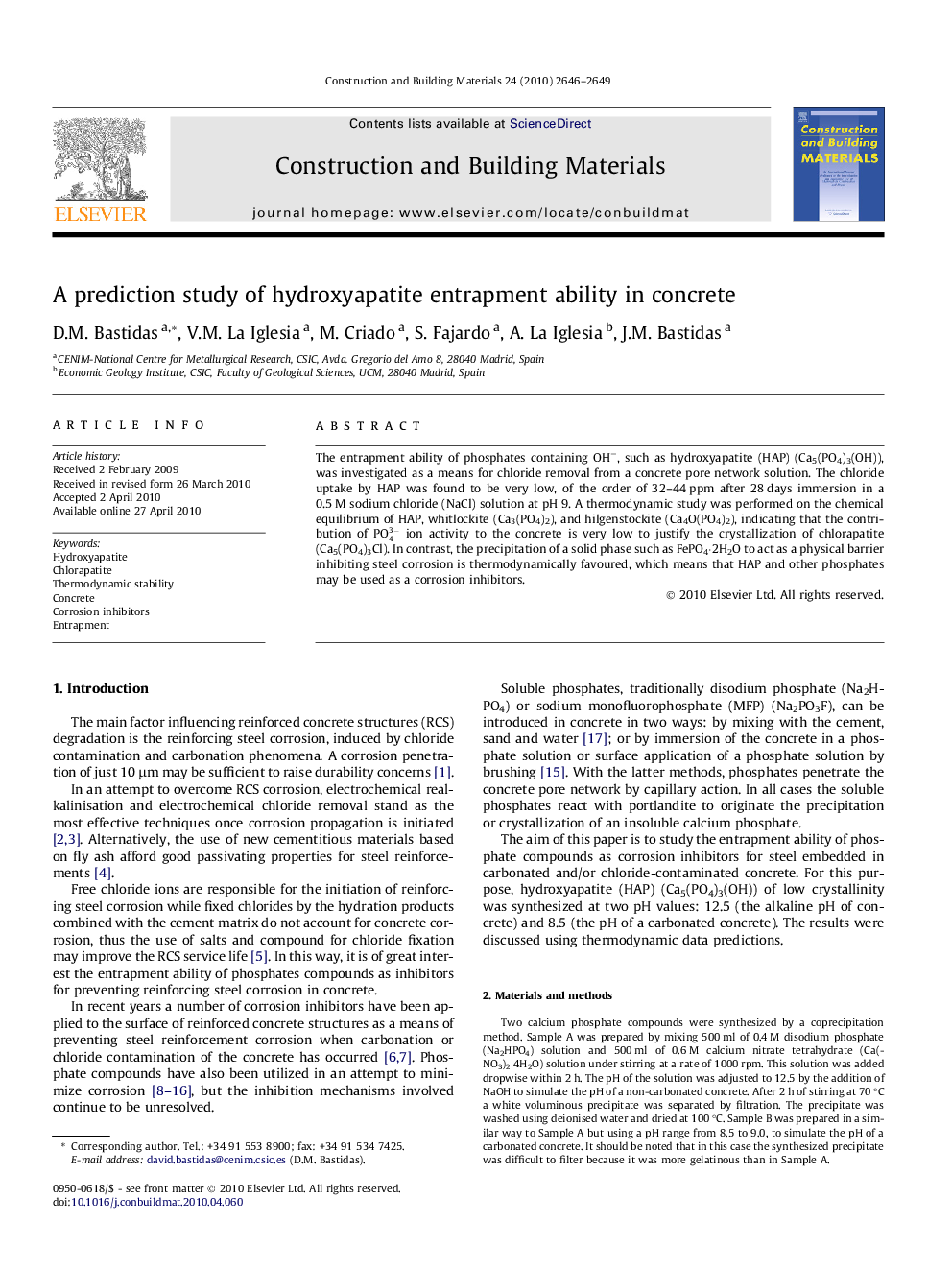| Article ID | Journal | Published Year | Pages | File Type |
|---|---|---|---|---|
| 260155 | Construction and Building Materials | 2010 | 4 Pages |
The entrapment ability of phosphates containing OH−, such as hydroxyapatite (HAP) (Ca5(PO4)3(OH)), was investigated as a means for chloride removal from a concrete pore network solution. The chloride uptake by HAP was found to be very low, of the order of 32–44 ppm after 28 days immersion in a 0.5 M sodium chloride (NaCl) solution at pH 9. A thermodynamic study was performed on the chemical equilibrium of HAP, whitlockite (Ca3(PO4)2), and hilgenstockite (Ca4O(PO4)2), indicating that the contribution of PO43- ion activity to the concrete is very low to justify the crystallization of chlorapatite (Ca5(PO4)3Cl). In contrast, the precipitation of a solid phase such as FePO4·2H2O to act as a physical barrier inhibiting steel corrosion is thermodynamically favoured, which means that HAP and other phosphates may be used as a corrosion inhibitors.
